The Panasonic Z85A is the entry-level OLED model from the Japanese manufacturer, which fully utilises the potential of its panel. Thanks to OLED technology, we can expect phenomenal picture quality at the highest resolution – perfect blacks, excellent contrast, and superb HDR effects, especially after professional calibration. Additionally, it supports a full range of HDR formats, so we can easily choose a film in the best possible quality. Although Panasonic is usually associated with home cinema equipment, the Z85A performs just as well with sports and games. A 120 Hz panel, support for VRR, ALLM, and even functioning Dolby Vision in games guarantee smooth gameplay without any motion blur. The sound also deserves praise – although we won't find an impressive soundbar like in the model Z95A, it is still quite pleasant and has noticeable bass. Downsides? Primarily the Amazon Fire TV – an operating system that still has growing pains. Many popular applications are missing, and some functions are unavailable or poorly translated (e.g. lack of support for external subtitles). Another issue is the not very high brightness, typical of older WOLED panels – this may be a problem in a brightly lit room. Despite these shortcomings, the Panasonic Z85A is a great option for cinema enthusiasts and gamers looking for a versatile television with exceptional picture quality and solid sound. If we can overlook certain limitations of the system and the not-so-high brightness, the Z85A still has a lot to offer. However, if complete user comfort and a richer application ecosystem are crucial for us, then it is worth considering other OLED televisions from competitors as well.
- Matching (Score)
- Our verdict
- TV appearance
- Where to buy
- Contrast and black detail
- HDR effect quality
- Factory color reproduction
- Color reproduction after calibration
- Smoothness of tonal transitions
- Image scaling and smoothness of tonal transitions
- Blur and motion smoothness
- Console compatibility and gaming features
- Input lag
- Compatibility with PC
- Viewing angles
- TV efficiency during daytime
- Details about the matrix
- TV features
- Apps
- Playing files from USB
- Sound
Panasonic Z85A vs Hisense U7Q PRO
Direct compare
U7Q PRO / U78Q PRO


Panel type: WRGB OLED
Resolution: 3840x2160
System: Amazon FireTV
Model year: 2024
Complete the survey to find out the result

Panel type: LCD VA
Resolution: 3840x2160
System: VIDAA
Model year: 2025
Complete the survey to find out the result

Overall rating
7.8
7.4
Movies and series in UHD quality
8.1
7.2
Classic TV, YouTube
8.7
7.1
Sports broadcasts (TV and apps)
8.5
6.7
Gaming on console
9.3
8.3
TV as a computer monitor
7.6
8.2
Watching in bright light
4.8
6.2
Utility functions
7.6
9.4
Apps
7.5
7.7
Sound quality
7.4
7.8
Complete the survey to find out what fits your preferences
Advantages
Perfect black and infinite contrast thanks to the WOLED panel
Great HDR quality with good coverage of the DCI-P3 colour gamut (98%)
Excellent picture quality after professional calibration
Complete HDR package: HDR10, HDR10+, Dolby Vision
Low input lag: 5 ms (120 Hz) and 13 ms (60 Hz)
Support for ALLM, VRR, HGIG and Dolby Vision in games
Very good viewing angles
Smooth motion without smearing thanks to the 120 Hz OLED panel
USB recording capability and PiP feature
AirPlay support
Pleasant sound quality with noticeable bass
Excellent contrast and black levels - true Mini-LED backlighting with a VA panel (65")
Very good motion smoothness - 4K@165 Hz panel
Very high HDR brightness - even above 1500 nits
Ideal for gaming - Low input lag, VRR, ALLM, 4x HDMI 2.1, 288Hz at 1080p.
The Vidaa operating system has many features such as Airplay, USB recording
Outstanding quality of tonal transitions
Disadvantages
SDR brightness at 300 nits – too low for heavily sunlit rooms
Amazon Fire TV system has a limited number of applications
Some system functions are poorly translated into Polish
No support for external subtitles in the USB player
No support for DTS:X audio in the television
No support for HGiG
Average viewing angles
Missing apps on the VIDAA platform
Our verdict
The U7Q PRO is a television that, after just a few minutes, sends a clear signal: "speed matters here." Hisense surprised us with how much has been packed into a device that doesn't cost a fortune. A refresh rate of 165 Hz in 4K, and even 288 Hz in Full HD – until recently, such numbers were reserved exclusively for top-tier gaming monitors. And here we have a mid-range television with almost a complete set of features for gamers, confidently throwing down the gauntlet to much pricier competitors. However, it doesn't stop at speed-related attributes. The U7Q PRO also boasts a very bright screen, reaching up to 1500 nits at its peak. Like every Mini-LED, it has its typical "quirks" associated with this technology, sometimes slightly exaggerating the image, but the overall visual effect remains very positive – especially in HDR content. It's also worth mentioning the Vidaa operating system – fast, intuitive, and equipped with features such as AirPlay, a voice assistant, and a web browser. While we won't find the full range of applications known from Android, the system performs really well in everyday use. So why is it "almost" ideal for gamers? The only missing feature is HGiG, which allows for precise adjustments of brightness levels in HDR games. This is a minor flaw, but it may be significant for console purists. Nevertheless, the U7Q PRO remains a very solid proposition – and a testament that Chinese manufacturers have not only caught up with their competition from Korea and Japan but in some aspects have even begun to surpass it.
TV appearance




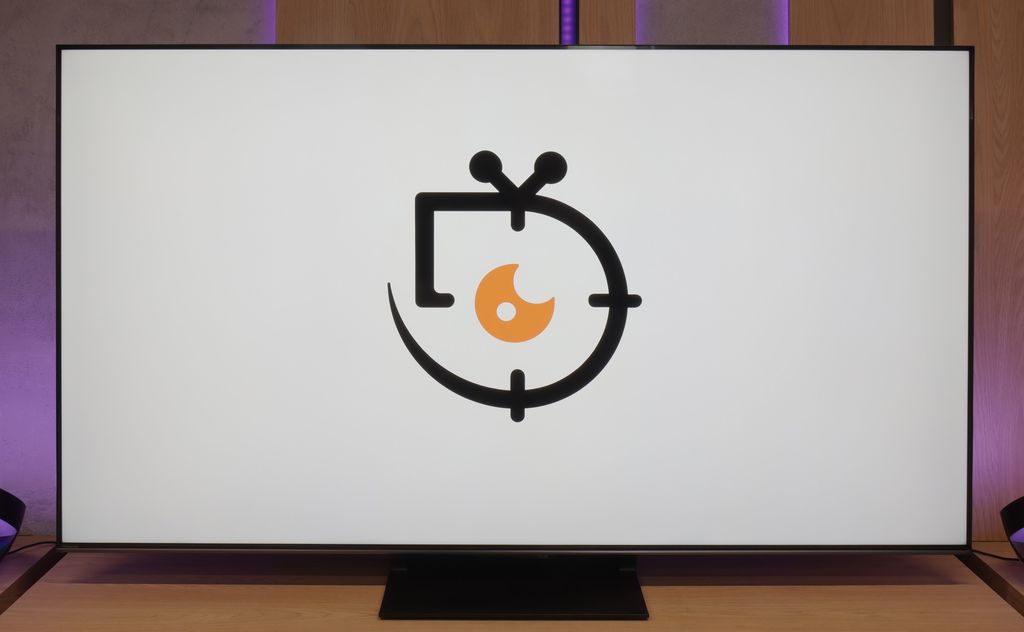
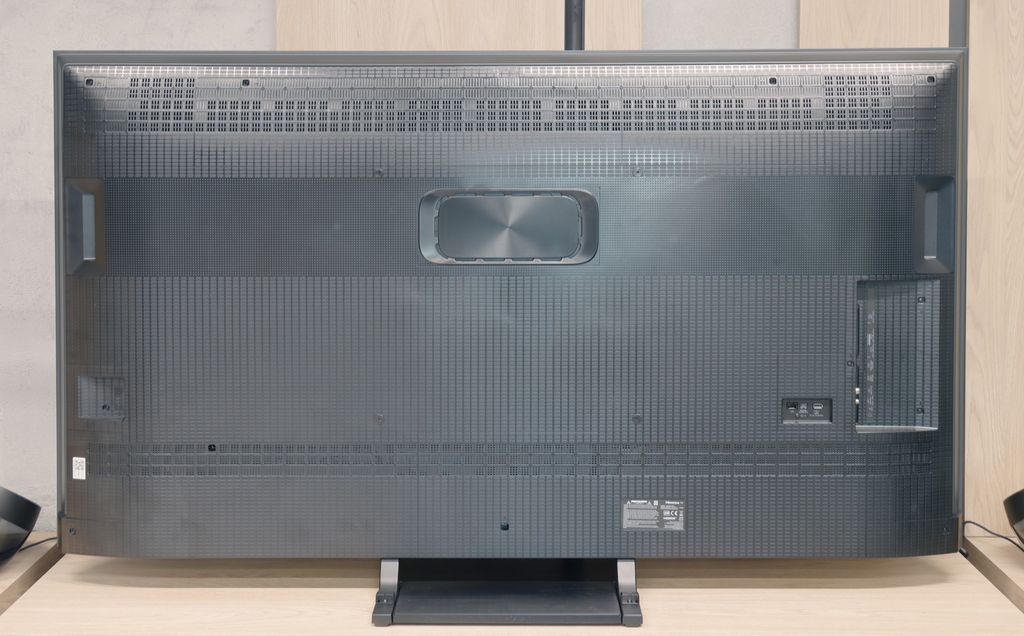
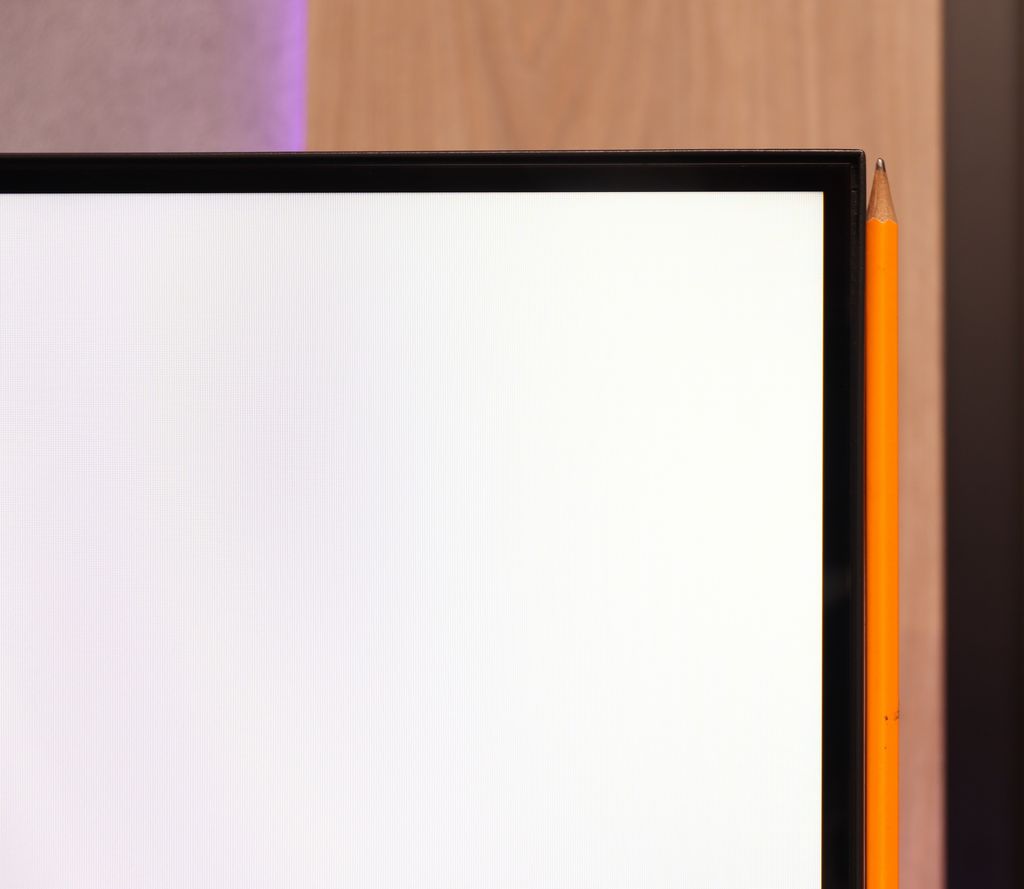

Contrast and black detail
10/10
8/10
Local dimming function: Yes, number of zones: 560 (20 x 28)
Contrast:

Result
∞:1

Result
∞:1

Result
∞:1

Result
∞:1

Result
∞:1

Result
340,000:1

Result
62,850:1

Result
42,000:1

Result
11,100:1

Result
7,500:1
Halo effect and black detail visibility:

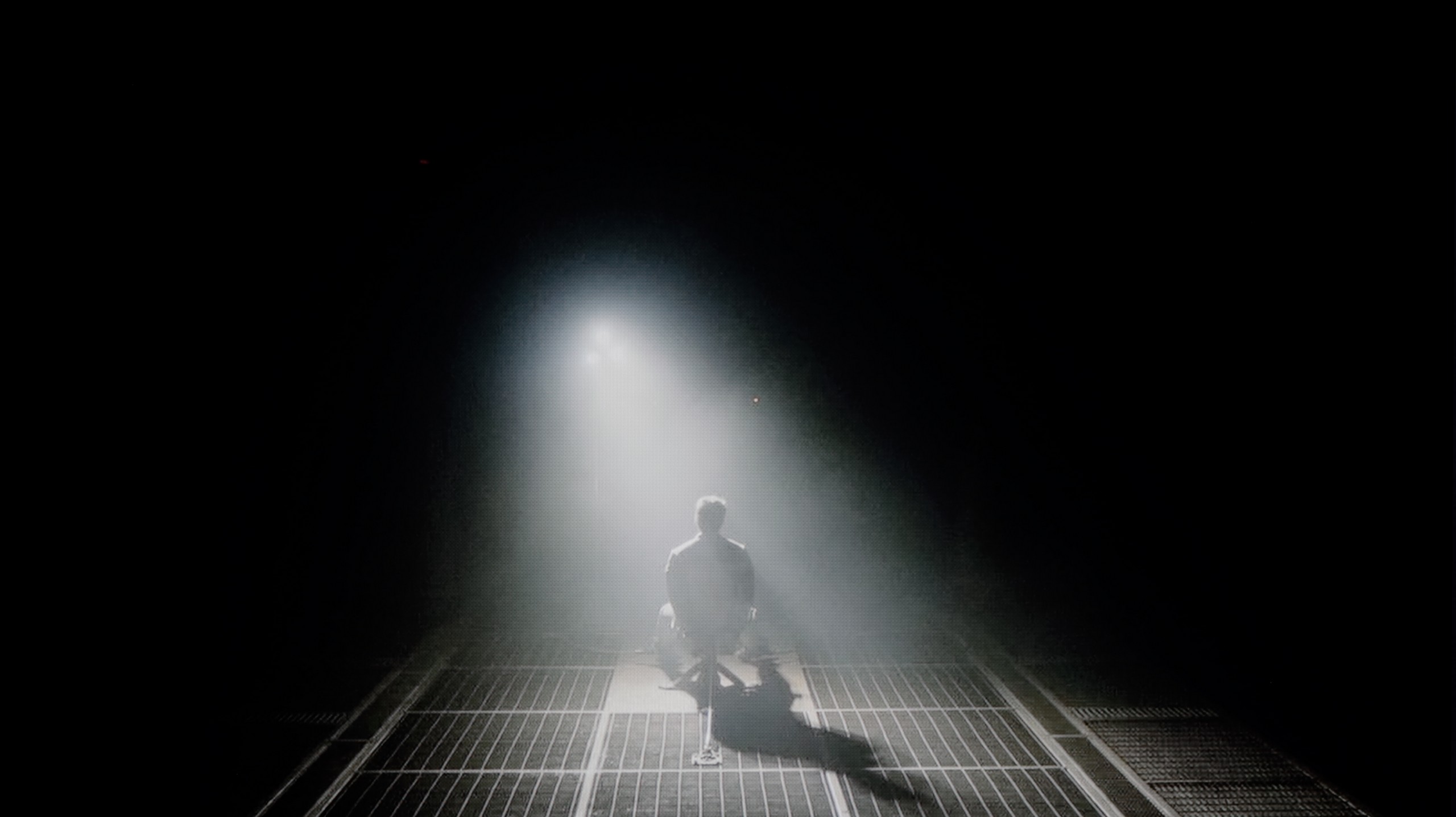
The Panasonic Z85A uses a WOLED panel, which means one thing – perfect black and infinite contrast. Each pixel lights up and dims independently, so there is no question of any streaks or glow around bright objects on the screen. Even in the most demanding scenes, the image looks simply exemplary. There is no room for compromise in this regard, which is still present even in the most expensive LCD televisions. Here, Panasonic shines, utilising organic technology provided by LG Displays, and does so in truly impressive style.
Hisense U7Q PRO is a mini-LED television with a VA panel and – in the 65-inch version we tested – 560 local dimming zones. It's worth noting from the outset that this number varies depending on the size – larger screens will have more zones, while smaller ones will have fewer accordingly. However, regardless of this, the dimming system works really well here.
The contrast performs exceptionally well for the price range in which this model sits. In optimal conditions, the U7Q PRO can achieve results close to six-figure values, which not long ago was reserved for equipment at a much higher level. In practice – in scenes like the one from the film Oblivion – the image looks stunning. With slightly dimmed light in the room, it can be difficult at first glance to distinguish this television from organic screens. Of course, it is still an LCD with local dimming, so compromises are unavoidable. In more demanding scenes, where there are many small light sources, the U7Q PRO tends to dim too aggressively. Instead of a slight deterioration in black levels – some details that should be visible disappear. This is a side effect of the algorithm that strongly adheres to the rule of "black should be black," even at the cost of subtle image elements.
But nevertheless – contrast is one of the stronger points of this model.
HDR effect quality
6.4/10
6/10
Luminance measurements in HDR:

Result
812 nit

Result
775 nit

Result
812 nit

Result
808 nit

Result
390 nit

Result
1129 nit

Result
323 nit

Result
721 nit

Result
267 nit

Result
736 nit
Scene from the movie “Pan” (about 2800 nits)

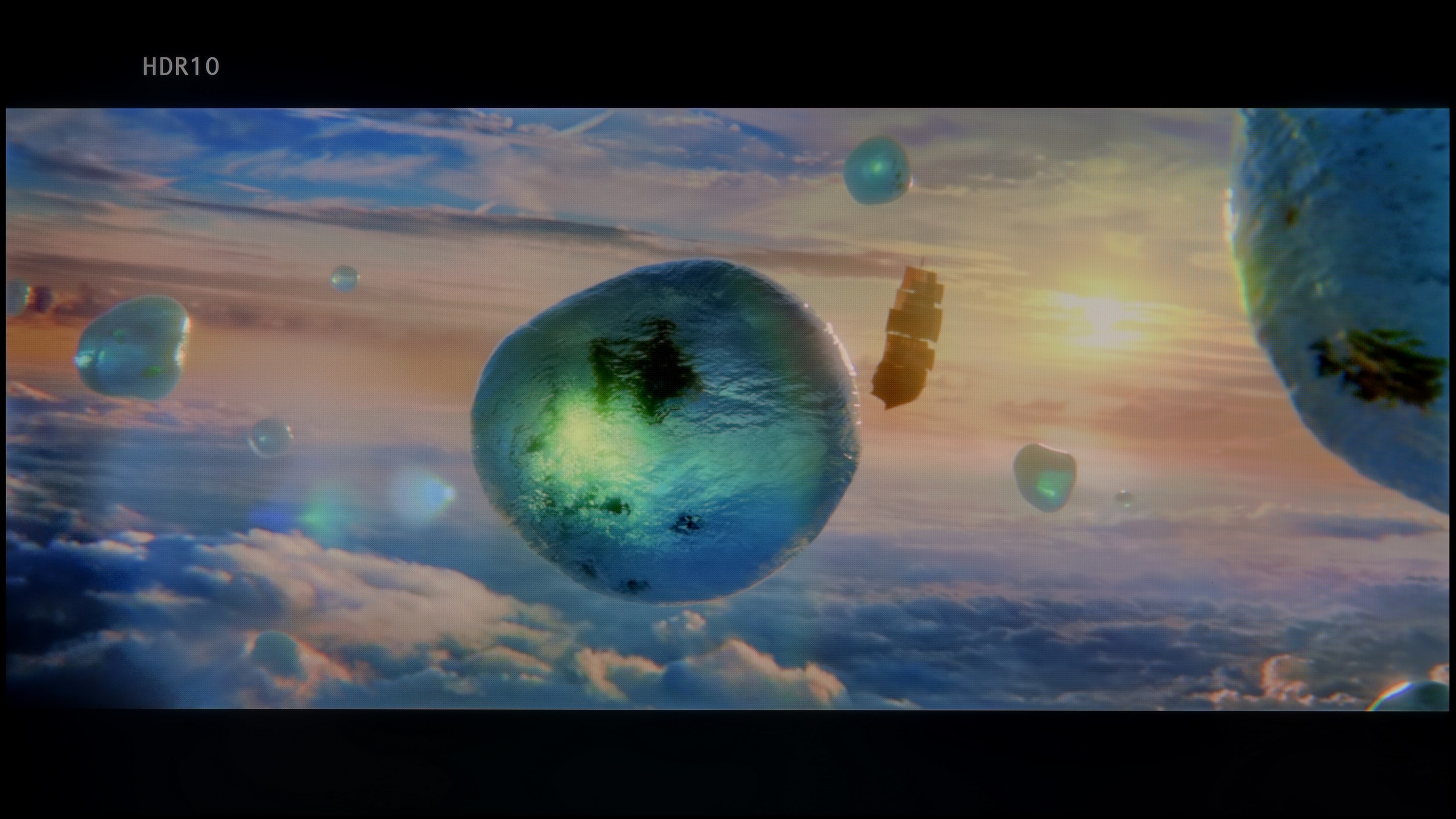
Scene from the movie “Billy Lynn” (about 1100 nits)


Static HDR10


Dynamic: Dolby Vision
Dynamic: Dolby Vision


HDR luminance chart:
Hisense U7Q PRO
Luminancja HDR
Luminance of RGB colors
Panasonic Z85A
Luminancja HDR
Luminance of RGB colors
The Panasonic Z85A is an OLED television, so one can immediately expect great effects in films. And indeed – our tests have shown that the WOLED panel can achieve around 800 nits of peak brightness in optimal conditions. This is a solid result that performs well in most demanding HDR scenes, allowing viewers to enjoy a dynamic and detail-rich image. However, like any OLED, the Z85A has its limits. In very bright scenes covering the entire screen – such as the final sequence from the film The Meg – the television reduces brightness to around 400 nits. This is standard behaviour for this technology, so if someone plans to watch films in a brightly sunlit living room, it is worth keeping this in mind. The coverage of the DCI-P3 colour gamut at 98% also deserves high praise. Thanks to this, the television reproduces a wide range of colours that stand out with vibrancy and depth, and details in HDR scenes are sharp and precise. In short – the Panasonic Z85A delivers a solid HDR effect that will satisfy any film enthusiast.
U7Q PRO is truly a bright television. In synthetic tests, it achieved over 1500 nits, which is an outstanding result for this price range. Such brightness – at least in theory – allows for HDR content to be displayed as intended by the creators, even in more demanding scenes with strong lighting. In practice, it is often very good, but not always perfect. In bright scenes with large areas – like the test chart with intense sunlight from the movie "Pan" – the U7Q PRO makes a huge impression. It can almost dazzle with its brightness, which is definitely an advantage in the context of HDR content. Unfortunately, it doesn't always manage to maintain this when many small bright details appear on a dark background. In such moments, the local dimming algorithms choose to dim some bright elements to maintain good black levels – and the side effect is that some details simply disappear from the frame. This is a classic compromise in mini-LED televisions – and the U7Q PRO is no exception. However, with such a large number of dimming zones, one could have hoped for a slightly more mature algorithm responsible for their control. Fortunately, the overall perception of HDR content is decidedly positive. The U7Q PRO is not only bright but also colourful, thanks to the PFS LED (QLED) coating, the coverage of the DCI-P3 colour palette is at 95%, while BT.2020 is around 73%.
Factory color reproduction
8.4/10
6.2/10


Factory Mode
After calibration


Factory Mode
After calibration
The Panasonic Z85A offers many picture modes, but the Filmmaker mode definitely stands out from the rest. It is rare for a television to be so well tuned straight out of the box, and the unit we had the opportunity to test really surprised us positively.
However, there were a few minor shortcomings. In the SDR signal, we noticed a slight deficit of red and blue, which resulted in the image having a cooler hue than it should have. This is especially noticeable in the comparative photo. Conversely, in 4K HDR content, the situation was the opposite – an excess of red made the image appear warmer than the creators intended. In terms of brightness characteristics (gamma) and the maintenance of the appropriate EOTF curve, it's hard to find fault. There are slight deviations, but they are so minimal that the average viewer is unlikely to notice them.
It is also worth emphasising that our observations pertain to a specific unit of the television. Two identical models may differ from each other due to natural production variances. Nevertheless, the unit we had in our hands looks really solid and deserves praise. Now it's time for our calibration – we'll see if we can extract even more from this screen!
We tested the U7Q PRO in the best possible picture mode offered by this model – Filmmaker Mode. And indeed, this mode performs the best in terms of colour reproduction. However, that doesn't mean it's perfect. In our test unit, both in SDR and HDR content, the image had a slightly cooler tone. The white balance was skewed towards blue, giving the overall impression of being a bit "colder". It may not be glaring, but it is definitely noticeable – especially on white backgrounds, which seemed slightly bluish rather than neutral. Additionally – as we mentioned earlier – the television has a tendency to slightly brighten and oversaturate the image, which is also confirmed by the gamma and EOTF graphs. All this together means that without calibration, the image can appear somewhat unnatural – too cool, with slightly exaggerated dynamics. Therefore, we decided to carry out our own calibration – and you can see its effects and graphs below.
Color reproduction after calibration
9.4/10
7.5/10

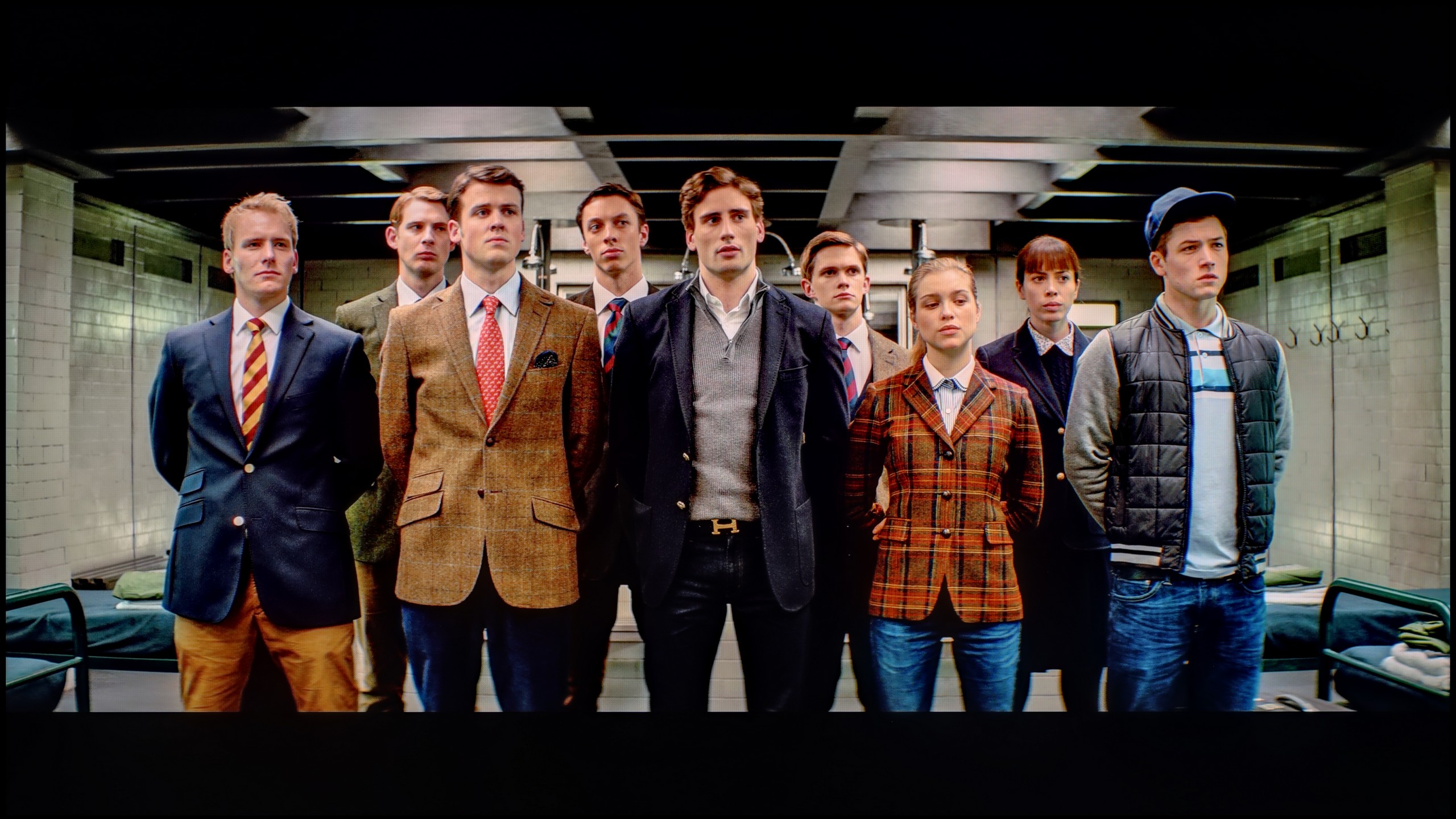


The Panasonic Z85A offers truly wide possibilities when it comes to image settings, so we enthusiastically set about calibration. Although we mainly focused on correcting the white balance, the final result exceeded our expectations. Both HD and 4K HDR content now display nearly perfect colour reproduction, with minimal errors that are hard to catch with the naked eye. Well-calibrated televisions are a rarity, and we must admit – it is truly gratifying. Although the gamma and EOTF curve did not require drastic adjustments, it was possible to further stabilise their characteristics across the entire brightness range. After calibration, the Panasonic Z85A is a true gem for home cinema enthusiasts. The image is precise, the colours are natural, and every scene looks exactly as the director intended.
Thanks to the calibration, we managed to tame the white balance in SDR and HDR content. In the case of SDR materials, the effect is really very good – the image becomes neutral, cohesive, and simply pleasant to take in. Everything looks as it should.
HDR performs a bit worse. Although the white balance appears correct and the image overall gains in naturalness, unfortunately, the delta E errors remain noticeable. Why? Because Hisense does not give us full control over how the television manages brightness in HDR mode with the U7Q PRO model. This is where the limitation comes into play. When we look at the EOTF curve for HDR content, we can clearly see what we mentioned earlier – at the beginning of the graph, there is a distinct drop, meaning the television darkens the smallest areas more than it should. On the other hand – the brightest elements can sometimes be overly bright. As a result, some details get lost, others are too aggressive, and overall control over brightness does not always match what we are trying to achieve during calibration.
Does the image look better after calibration? Definitely yes, in terms of colour. But when it comes to managing brightness in HDR, we have to accept that the Hisense U7Q PRO will do it in its own way.
Smoothness of tonal transitions
7.5/10
9.5/10







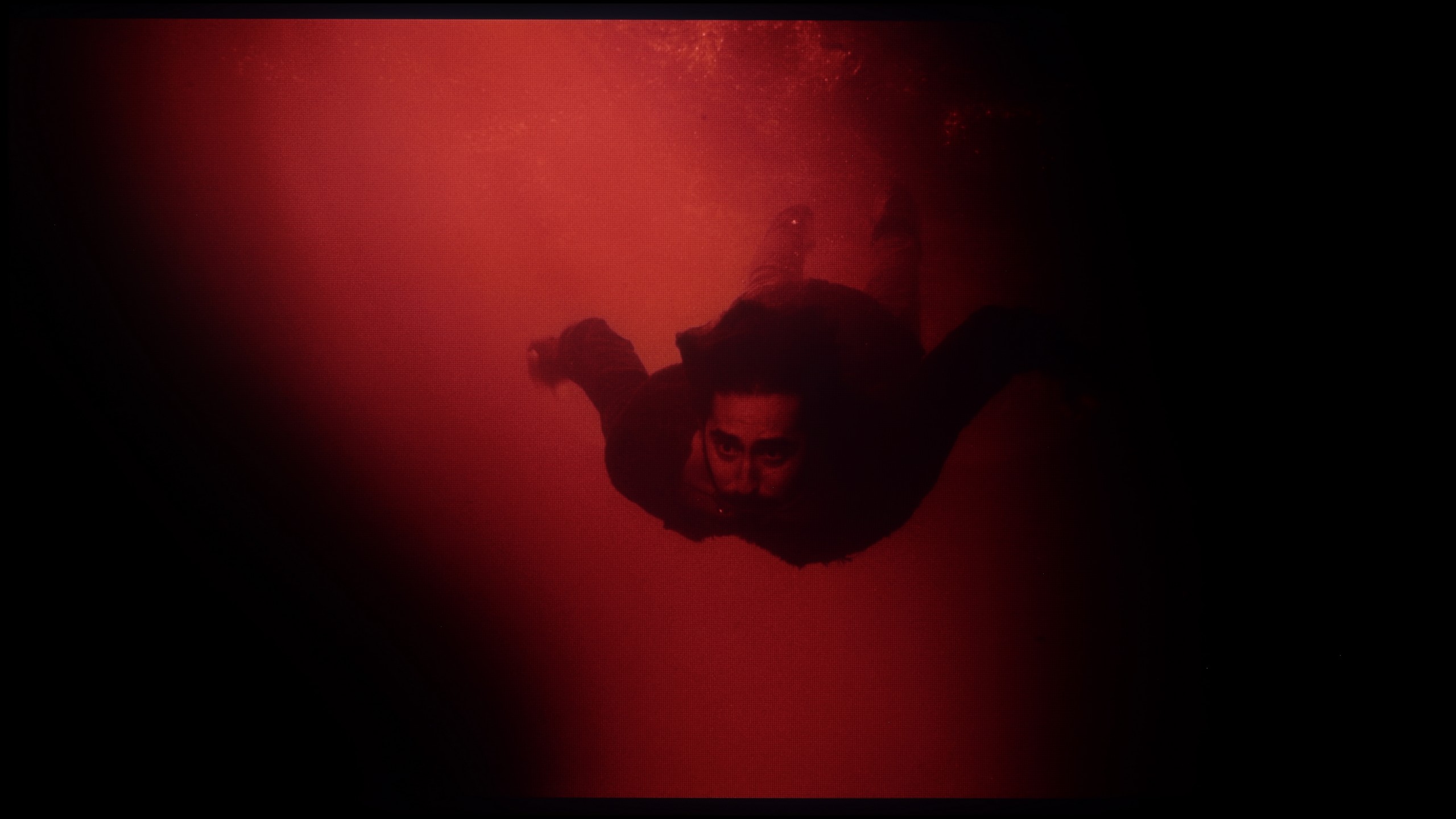




The Panasonic Z85A handles the smoothness of tonal transitions really well. Colours blend together naturally, without noticeable artefacts or visible banding. However, in brighter scenes, such as the opening sequence in the film Kingsman, minor imperfections can be discerned. This is typical of WOLED panels, which have their limitations compared to Samsung Display's QD-OLED designs due to the use of white sub-pixels. The differences are not colossal, but a trained eye will pick them up, especially in more demanding scenes with subtle colour gradients. Despite these minor reservations, the Z85A offers a level that will satisfy the overwhelming majority of users. Tonal transitions are smooth, and the image maintains consistency even in complex scenes. This is a solid result, which in practice will rarely be a hindrance during everyday viewing of films or series.
The U7Q PRO handles tonal transitions really well. Colours blend smoothly, without any banding, stripes or strange artefacts. Even in more challenging scenes that typically expose any imperfections – there was nothing to criticise here. The image simply looks clean. Gradients – both coloured and grey – are smooth, nothing tears, nothing distracts. This is one of those elements that you don’t pay attention to while watching… certainly not in the case of the U7Q PRO.
Image scaling and smoothness of tonal transitions
7.4/10
7/10
Smooth transition function

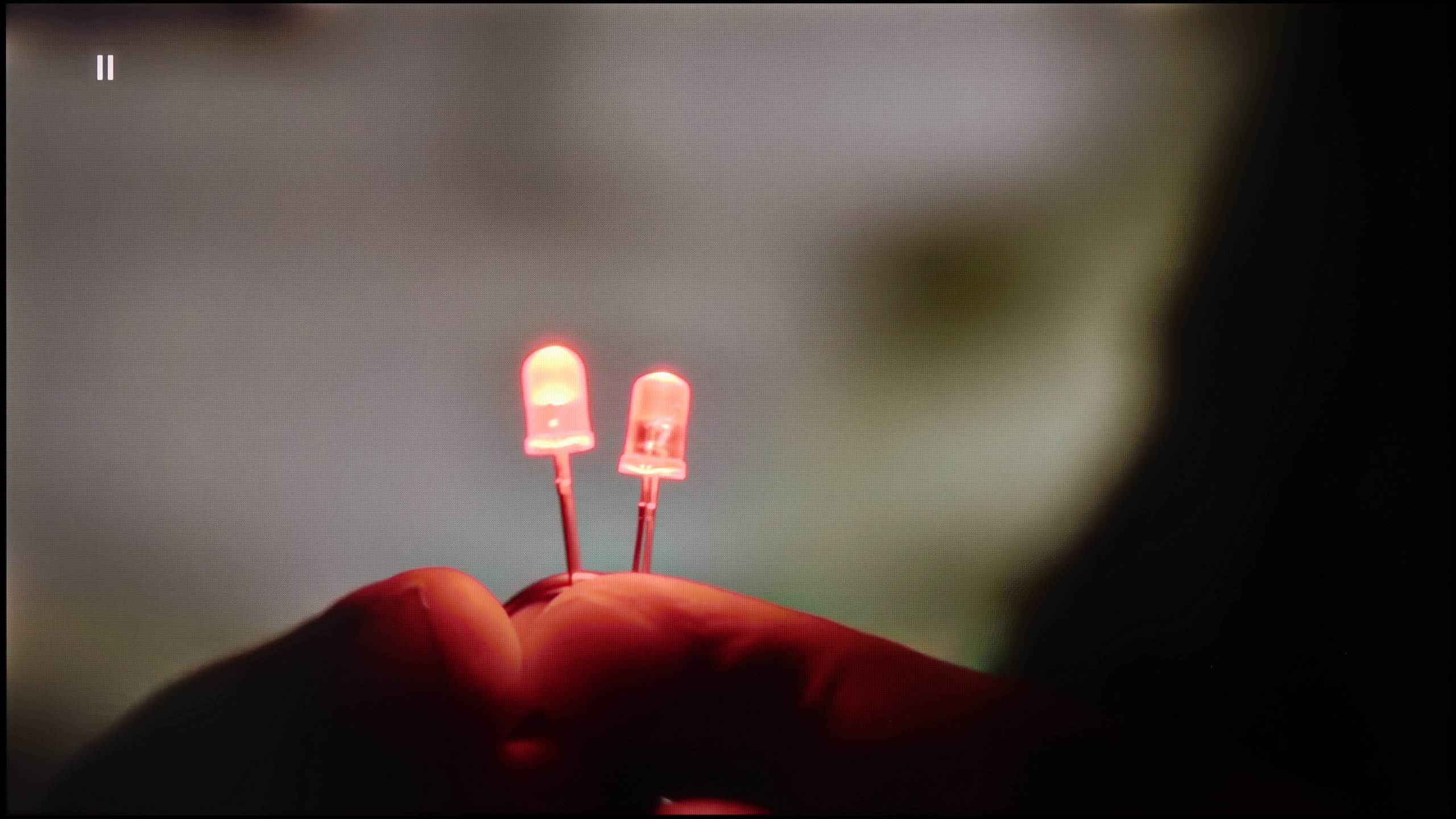
Image without overscan on the SD signal


Now that we know how the Panasonic Z85A performs with tonal transitions in 4K content, it’s time to take a look at its "Gradation Smoothing" feature. It works, but unfortunately not entirely effectively. Regardless of the chosen value – whether it’s low, medium, or high – we were unable to achieve perfectly smooth tonal transitions in our test sequence. We recommend setting this feature to an intermediate level. Although it may slightly blur fine details, at least the issue of film grain loss does not occur, which for many viewers can be crucial when watching classic productions.
As for image scaling, the television performs quite well. It’s noticeable that the image is slightly sharpened, and slim lines may at times appear a bit jagged. However, this is standard in most TVs, and fortunately, it can be adjusted using the sharpness slider. This gives us complete control – we can achieve a more plastic, blurred image or a clearer one, although it may be more “harsh” and artificially sharp. It all depends on user preference and the type of content we are watching. Overall, the scaling is at a solid level and should satisfy most users who are using lower resolution materials.
If someone happens to come across older materials where the colour banding issue occurs – Hisense has a solution for that. In the U7Q PRO, we find a function called "Smooth and Gradient Image". Set to the "Medium" level, it works really well – removing most issues with gradation while not smoothing out the entire image, like blurring in Photoshop. 😉 Film grain remains, details do not disappear – this is exactly how it should work. Well done on the implementation!
As for upscaling weaker materials, it is simply good. It is not at the level of the most expensive televisions with advanced upscaling, but older content looks good. There is minor aliasing at very low resolutions, but this is completely normal and hard to avoid. On the plus side – even with the oldest materials, there is no overscan effect, the image is neither cropped nor artificially stretched.
Blur and motion smoothness
8.5/10
7.5/10

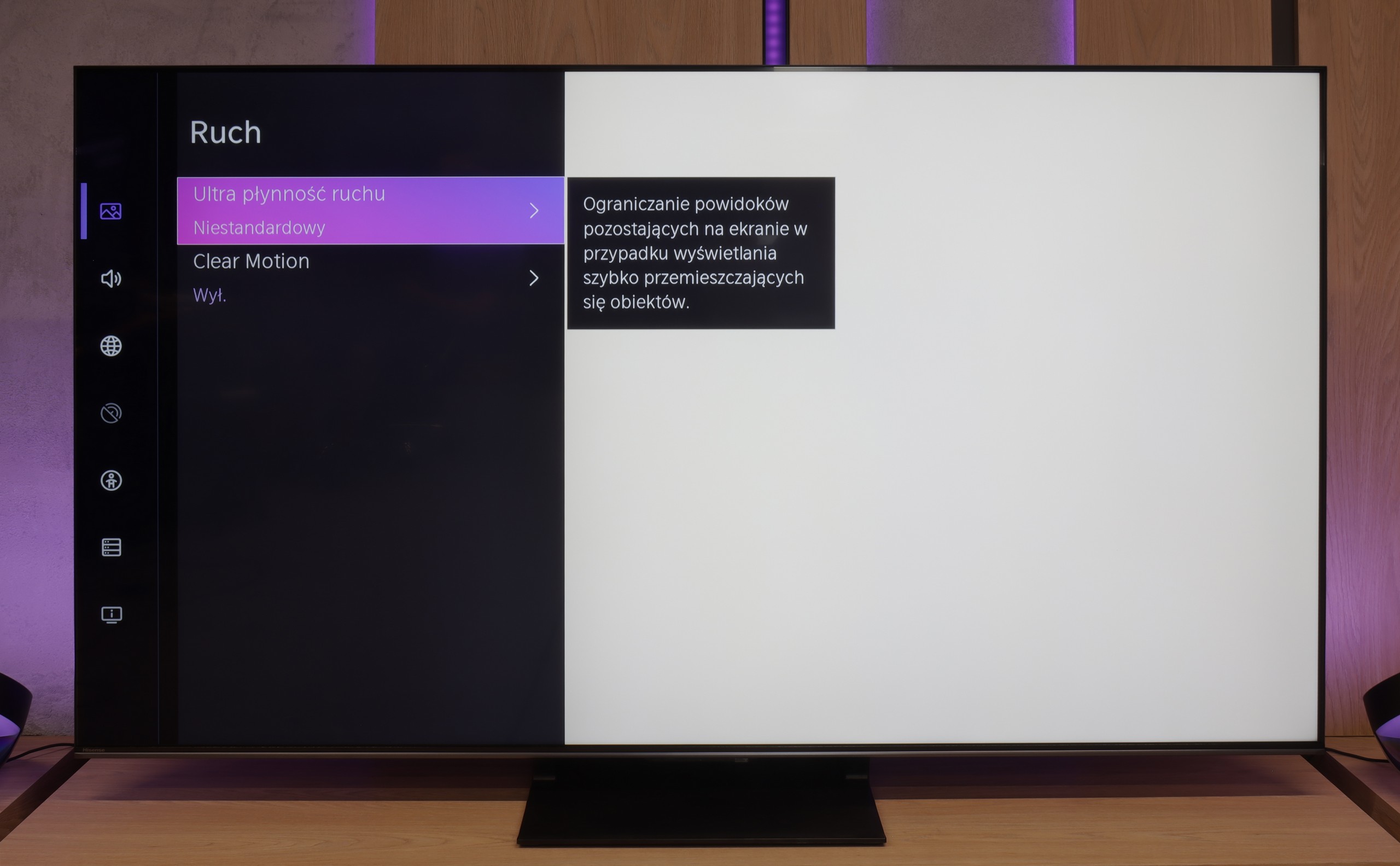
Blur (native resolution, maximum refresh rate):




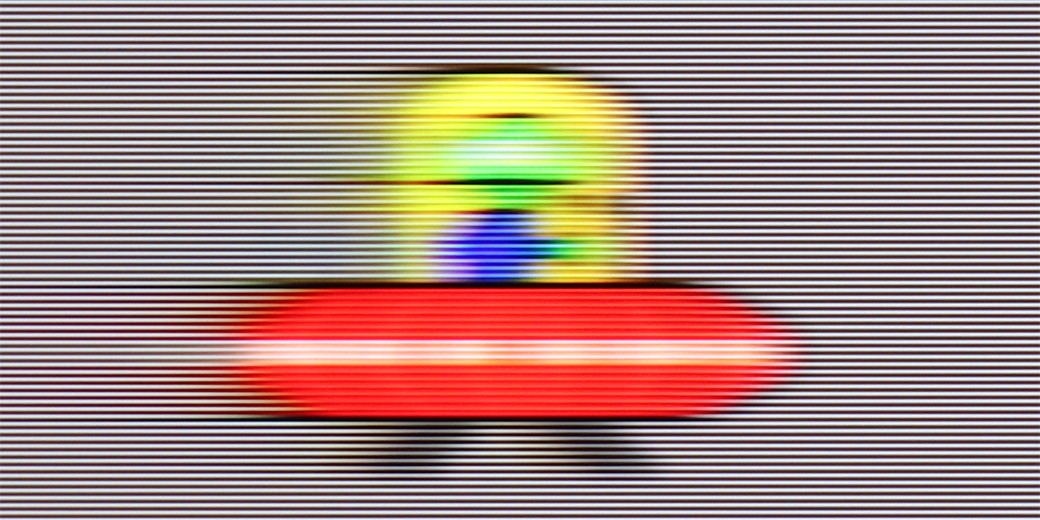
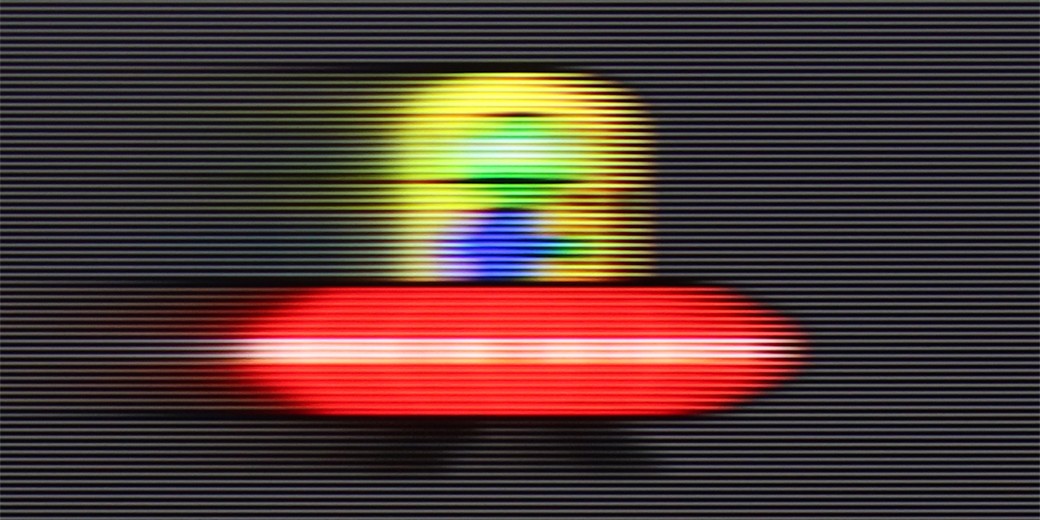
Blur (BFI function enabled):
Image flickers in this mode



Smużenie ():
Smużenie (1080p 288Hz):



The Panasonic Z85A features a 120 Hz panel, which will certainly please both gamers and sports fans. Admittedly, it is not 144 Hz like some gaming TVs, but in practice, the difference is really hard to notice. In games, the image is stable and clear, and during fast action, there is no sign of any blurring. The same applies to sports – a fast-running footballer or a dynamic car manoeuvre looks smooth and natural. The TV also has the “Intelligent Frame Creation” function, which is a motion smoother. There are two sliders here – one is for reducing blur, and the other is for motion smoothness. With these, you can adjust the image to your own preferences – whether it be more of a cinematic effect with gentle transitions between frames, or a maximally smooth image ideal for watching sports.
“Speed” – this word came up most often during our tests of the U7Q PRO. The television is equipped with a 165 Hz panel, which is impressive in itself – especially since we are talking about a model in the mid-range price category. Of course, PC gamers will benefit the most from its full capabilities, but even with everyday viewing, it's clear that this is a fast and efficient panel. Like most modern televisions, the U7Q PRO can also enhance the fluidity of films that were originally recorded at 24 frames. In the menu, we find a slider that allows us to adjust the effect to our own preferences – from a more cinematic look, with subtle motion, to stronger smoothing with the characteristic “telenovela effect.”
Console compatibility and gaming features
10/10
8.5/10
- ALLM
- VRR
- VRR range40 - 120Hz48 - 288Hz
- Dolby Vision Game Mode
- Correct implementation of HGIG
- 1080p@120Hz
- 1440p@120Hz
- 4K@120Hz
- Game bar

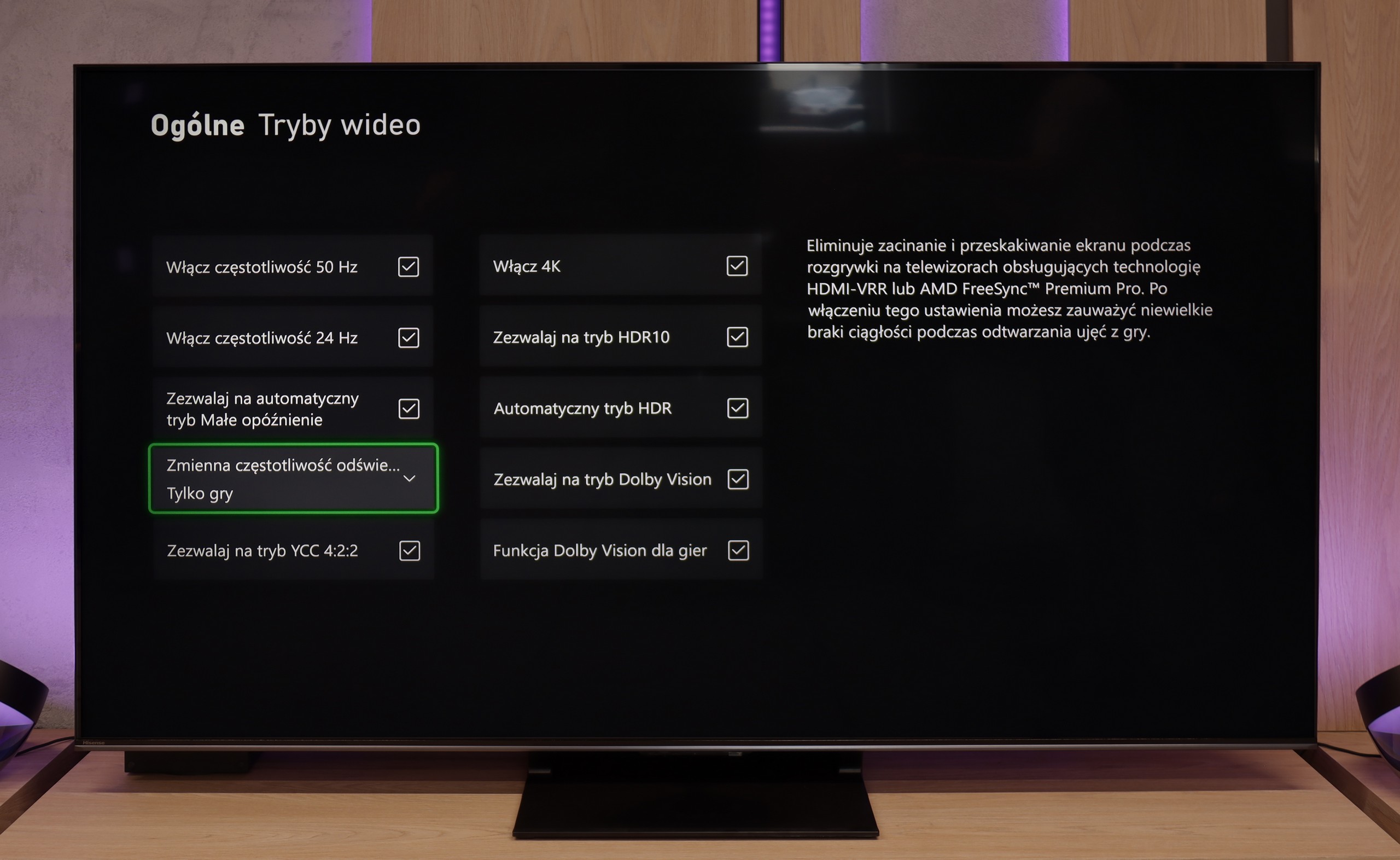



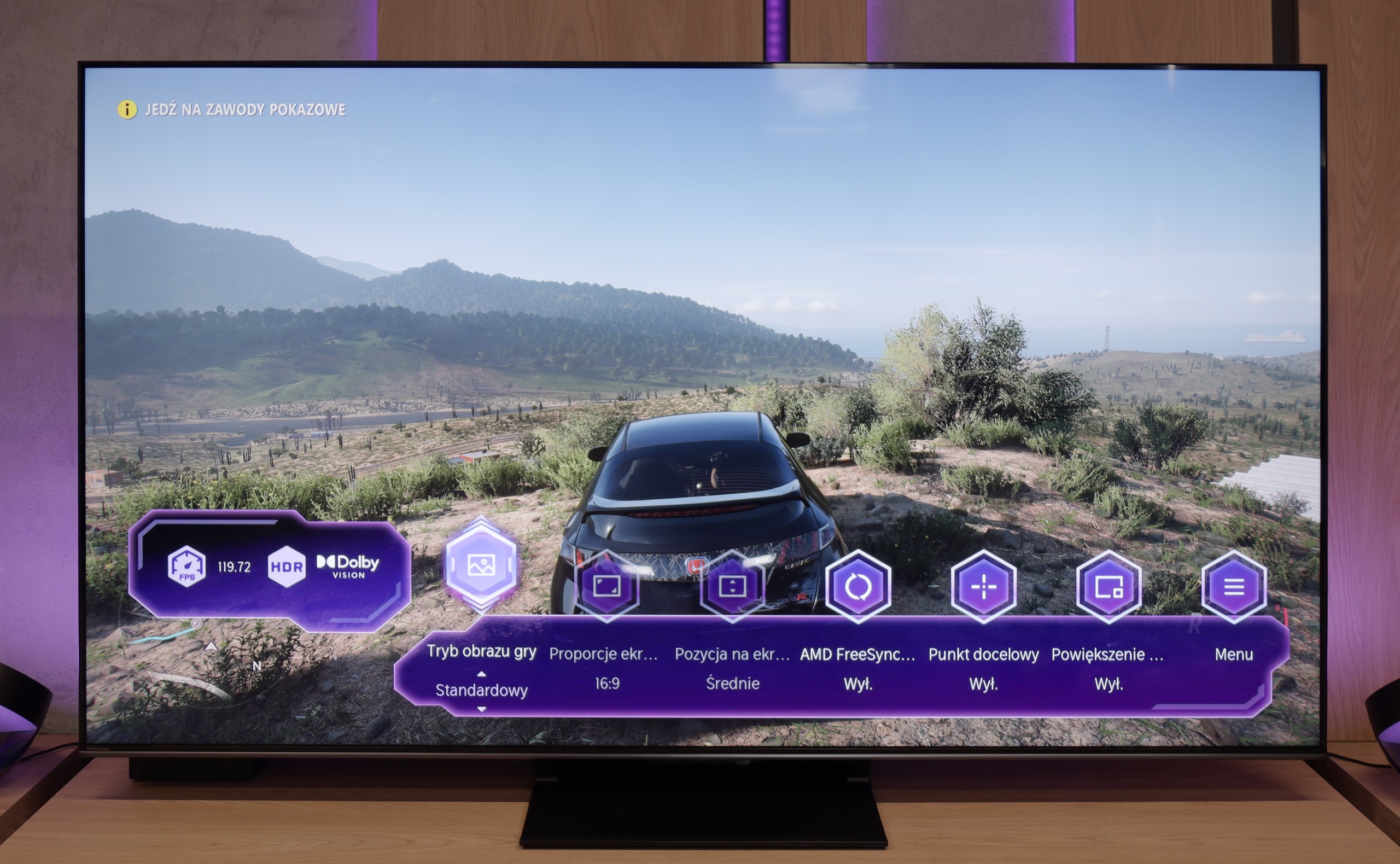

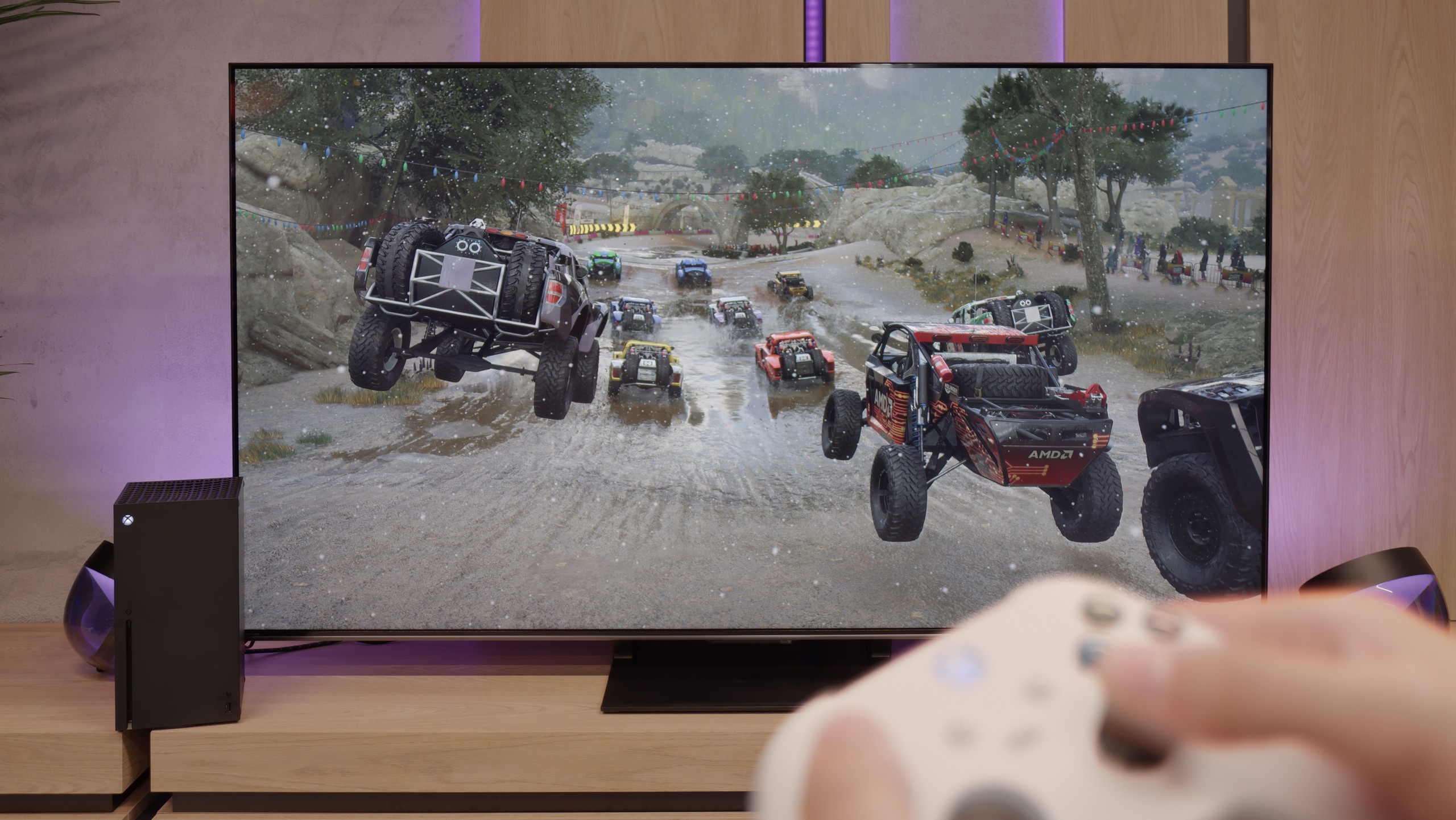
Panasonic is mainly associated with home cinema televisions, but the Z85A demonstrates that it can also step into the gaming world with a really strong impact. This hardware can easily be called a gaming beast – it has everything needed for comfortable gameplay.
Although there are only two HDMI 2.1 ports, both operate at full bandwidth, so we can easily connect both a next-gen console and a gaming PC. All key features are supported: ALLM automatically switches the television to game mode, VRR ensures smooth images without stuttering or tearing, and with correctly implemented HGIG and Dolby Vision, HDR games look really good – colours are vivid, details are sharp, and dark scenes are clear. We also find a Game Bar in the form of a clear, circular menu. It may not look as impressive as the competition's, but it is intuitive and contains all the important settings we would like to have at hand during gameplay.
In summary – the Panasonic Z85A is equipment that truly surprises with its gaming capabilities. It is a television on which both console gamers and PC players will feel at home. It is smooth, dynamic, and simply good.
The Hisense U7Q PRO is a television that seems almost designed with gamers in mind. It has practically everything one could expect from a gaming display: variable refresh rate (VRR), automatic low latency mode (ALLM), and as many as four HDMI 2.1b ports with full bandwidth of 48 Gb/s. Additionally, there is a clear and quite functional Game Bar, as well as a well-implemented Dolby Vision GAMING mode that works seamlessly with Xbox Series S and X consoles.
Sounds like perfection? Well, almost. Unfortunately, Hisense has still not implemented the HGiG feature, which means the system limitation of tone mapping on the television side. This means that when configuring HDR brightness on the console, we do it "by eye" or search for settings in online guides, as the display does not show the actual range of its brightness. It’s a pity – because HGiG indeed makes it easier to match the console to the television and helps avoid overexposure or overly dark scenes in HDR games.
Fortunately, the other features work very well. Input lag is low, responsiveness is excellent, and the handling of other functions is impeccable. And while not everything worked perfectly, the U7Q PRO can still be recommended to gamers without hesitation.
Input lag
10/10
9.8/10
SDR
HDR
Dolby Vision
Since the Panasonic Z85A has also been designed with gamers in mind, the input lag had to be refined here. And indeed – the results are truly excellent. At 120 Hz, the lag is only 5 ms, and at 60 Hz, it is 13 ms. These are values that will satisfy even the most demanding gamers, whether we are talking about fast-paced shooters or precise fighting games. The responses to our movements with the controller are practically instantaneous, and the gameplay is smooth and responsive. Importantly, the Dolby Vision mode also works flawlessly here. Just a few years ago, using Dolby Vision in games often resulted in high input lag, but in the Z85A, this problem has been effectively eliminated.
In terms of signal latency, the Hisense U7Q PRO performs really well. For 120 Hz content, the input lag remains below 10 ms, which translates to a lightning-fast response – the screen almost instantly reacts to our movements, something console and PC gamers will particularly appreciate. With 60 Hz content, the situation is somewhat worse, as the response time doubles – this is natural and applies to virtually all televisions. Nevertheless, it still remains below 20 ms, which can be confidently considered a very good result, even close to perfection – and in practice, it is hardly noticeable during gaming.
Compatibility with PC
7.6/10
8.2/10

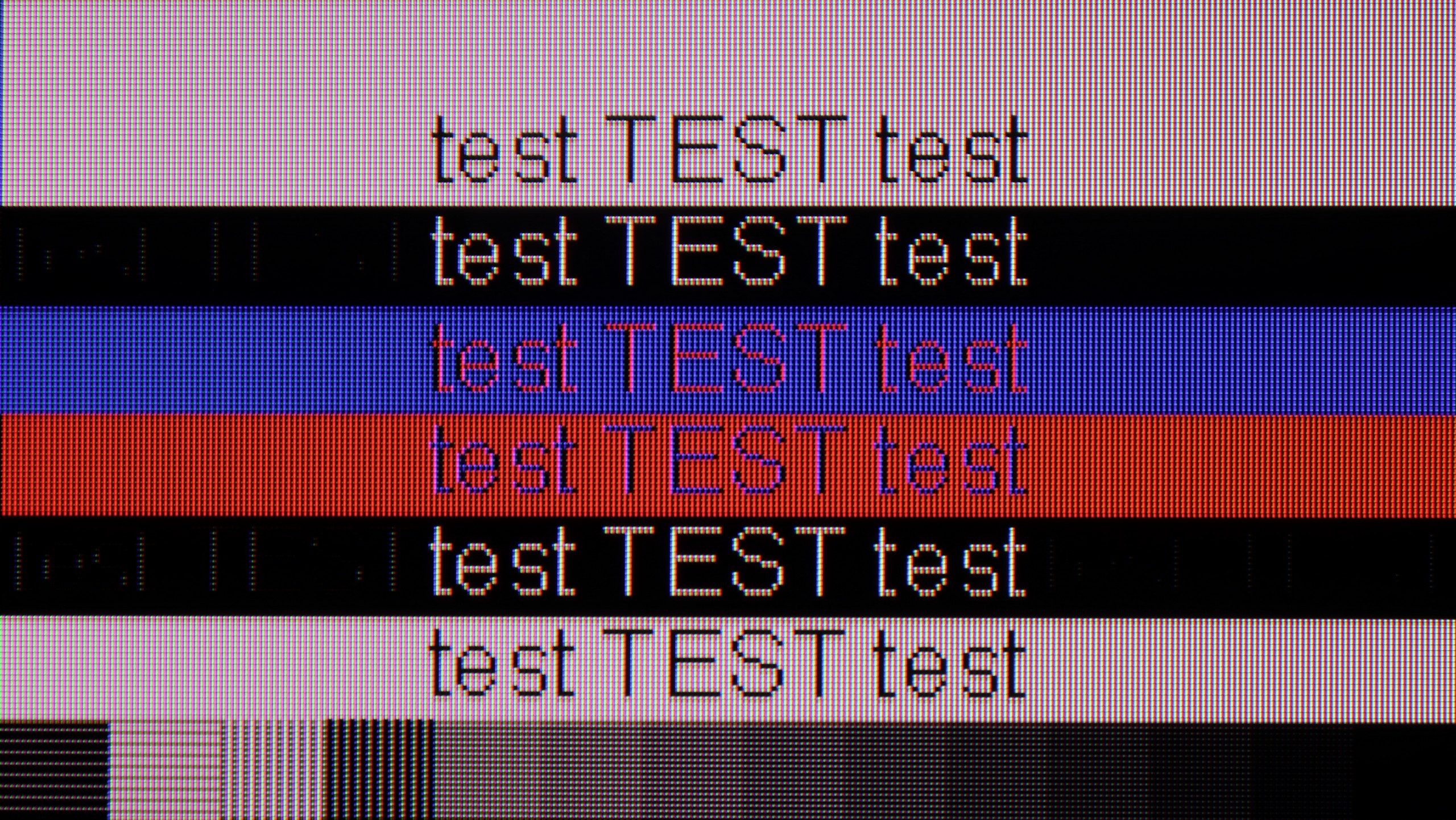
Using the Panasonic Z85A as a computer monitor performs really well. The text is readable and clear, making it easy to browse websites or work with documents. However, one must keep in mind certain limitations of the WOLED panel – the distinctive way it displays fonts may hinder more demanding users, especially those who spend long hours working with text. In terms of gaming on PC, the television performs just as well as with a console. Low input lag, a 120 Hz refresh rate, and proper implementation of G-Sync and FreeSync ensure a smooth and responsive image without annoying stutters or frame tearing.
Playing on PC using the Hisense U7Q PRO is pure fun. Low input lag, full 165 Hz in 4K and even 288 Hz in Full HD - these are numbers we wouldn’t expect from a television at this price. In this regard, it’s really hard to fault anything. If someone is looking for a large screen for gaming from a PC - the U7Q PRO can confidently serve as a monitor. It performs slightly worse for everyday work with text. Although chroma 4:4:4 is present, so theoretically everything should look good. But in practice, grey fonts on a dark background look strange – vertical lines are sharp, but horizontal ones can blur, disappear, or appear slightly dimmed. However, it must be honestly added that if you use the television as usual – that is, from a few metres away – you probably won’t notice this. The problem only becomes visible when someone places the U7Q PRO on a desk, a metre from their face, and starts working with text or spreadsheets. If you plan to use it in that way – it’s worth keeping this in mind.
Viewing angles
7.4/10
3/10
The viewing angles on the Panasonic Z85A are really good – after all, it's OLED. Whether we're looking at the screen straight on or at a steep angle, the colours remain vibrant, and the contrast hardly loses quality. Of course, the Z85A is somewhat outperformed by televisions with MLA micro-lenses or Samsung's QD-OLED panels, which currently set the highest standard in this regard. However, the differences are subtle enough that most users won't notice them during everyday viewing.
In this regard, the U7Q PRO performs moderately. The television is equipped with a VA panel, which inherently is not known for wide viewing angles. When we start looking at the screen at an angle, the image noticeably loses brightness, and the colours begin to wash out. This is a completely normal phenomenon in VA panels without additional coatings that widen the angles – so if you plan to watch from the side or in a larger group, it’s worth keeping this in mind. On the other hand, directly in front – the image looks great, with deep blacks and very good contrast, much better than on IPS/ADS type panels.
TV efficiency during daytime
4.8/10
6.2/10




Matrix brightness
Average luminance SDR
Hisense U7Q PRO: 472 cd/m2
Panasonic Z85A: 286 cd/m2
The Panasonic Z85A leaves something to be desired during the day. The panel, despite being matte, moderately suppresses reflections, which can be noticeable in bright rooms. The reflections are not excessively visible, but there is one catch – they take on a bluish tint. In certain situations, especially in strong daylight, this can be slightly annoying and distract from the content on the screen. Additionally, the maximum brightness is just under 280 cd/m². That simply isn't enough to comfortably watch television in a brightly lit room. If we are planning a viewing in the middle of a sunny day, it will be necessary to cover the windows to ensure the image looks good.
As we mentioned earlier – the U7Q PRO is really a bright television, especially when it comes to HDR content. For SDR material, the television dims a bit, but an average brightness of around 500 nits is still a very solid result. This means that it's easy to watch television or movies even in quite a bright room. Only in very extreme lighting conditions – for example, strong sunlight directly on the screen – can visibility be somewhat affected. Fortunately, Hisense has applied a satin anti-reflective coating that effectively suppresses reflections, and the blacks retain their depth even during the day. This makes a difference and allows for comfortable use of the television in various lighting conditions.
Details about the matrix
Subpixel Structure:

Panel uniformity:

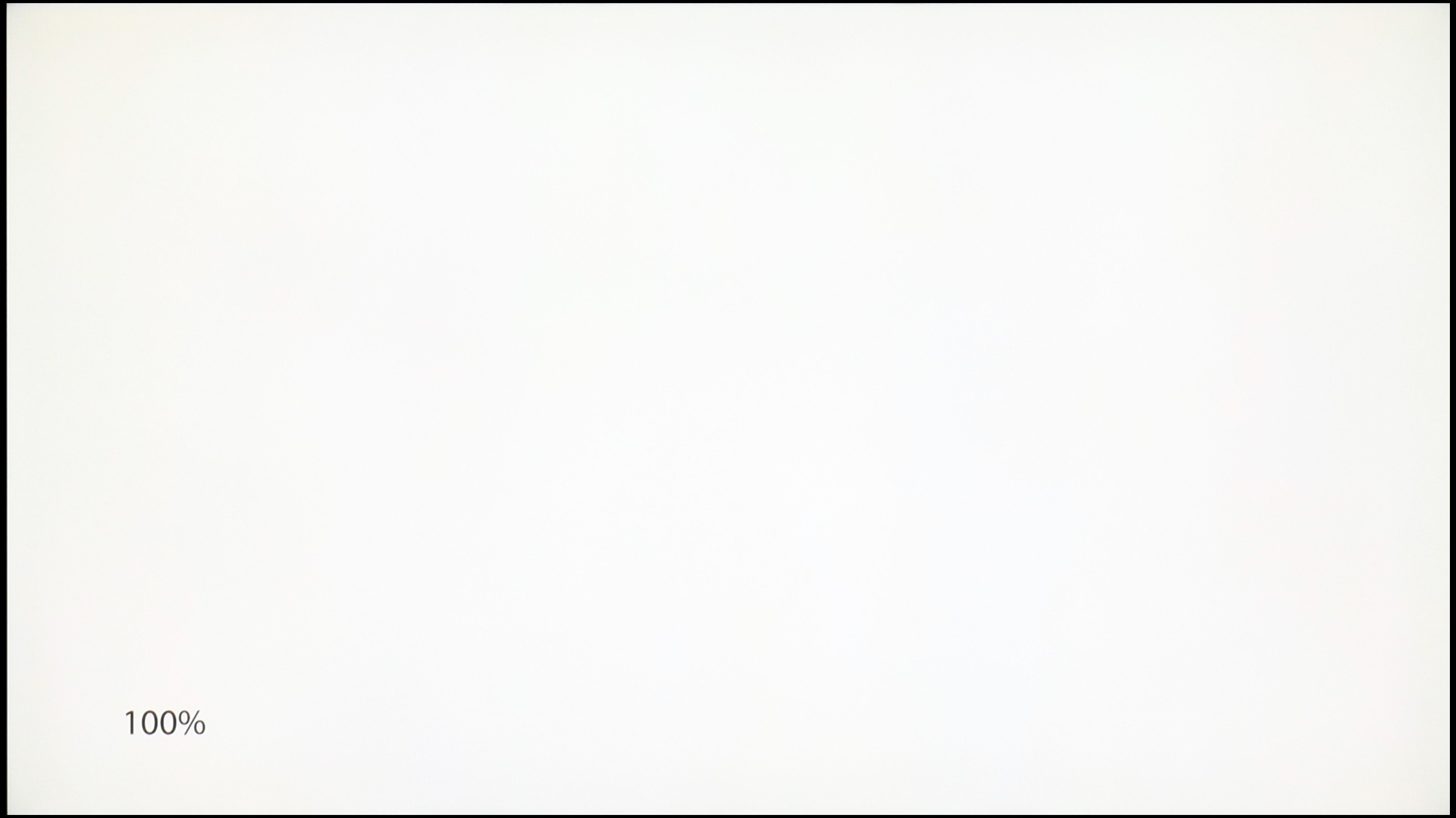
TV features
7.6/10
9.4/10
- HDMI inputs2 x HDMI 2.0, 2 x HDMI 2.1 48Gbps0 x HDMI 2.0, 4 x HDMI 2.1 48Gbps
- Other inputsRCA (Chinch)
- OutputsToslink (Optical audio), eARC (HDMI), ARC (HDMI), Mini-Jack (Headphones)Toslink (Optical audio), eARC (HDMI), ARC (HDMI), Mini-Jack (Headphones)
- Network InterfacesWi-Fi 2.4GHz, Wi-Fi 5GHz, Ethernet (LAN) 100MbpsWi-Fi 2.4GHz, Wi-Fi 5GHz, Ethernet (LAN) 100Mbps
- TV receptionDVB-T, DVB-T2, DVB-S, DVB-S2, DVB-CDVB-T, DVB-T2, DVB-S, DVB-S2, DVB-C
Classic features:
- Recording to USB (terrestrial TV)
- Recording programming
- Picture in Picture (PiP)
- RF remote control (no need to aim at the screen)
- Backlit remote control
- Teletext
- Audio only mode
- Possibility to connect Bluetooth headphones to the TV
- Possibility to simultaneously use Bluetooth headphones and the TV speaker
Smart features:
- AirPlay
- Screen mirroring (Windows Miracast)
- Wyszukiwanie głosowe
- Voice search in native language
- Ability to connect a keyboard and mouse


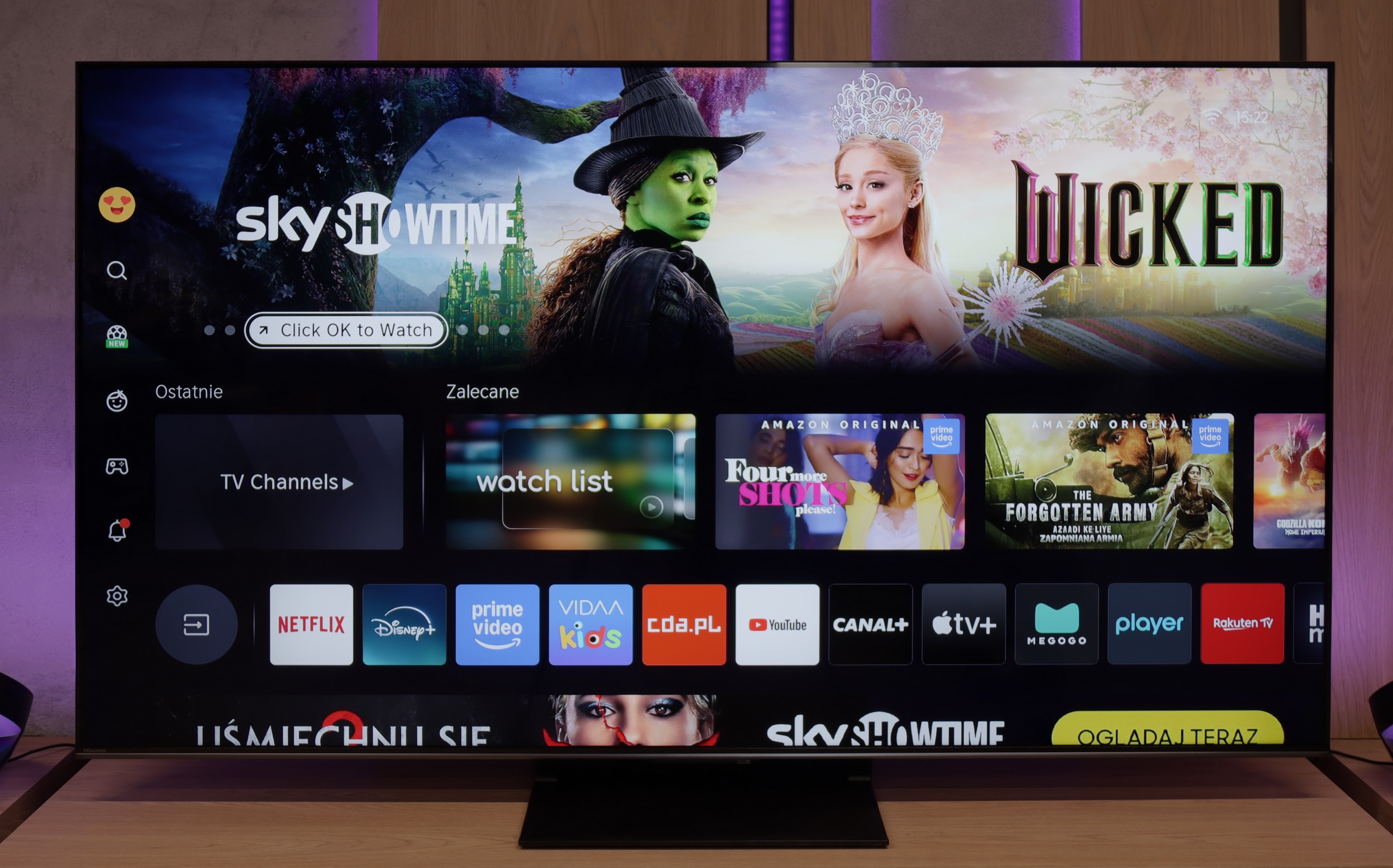
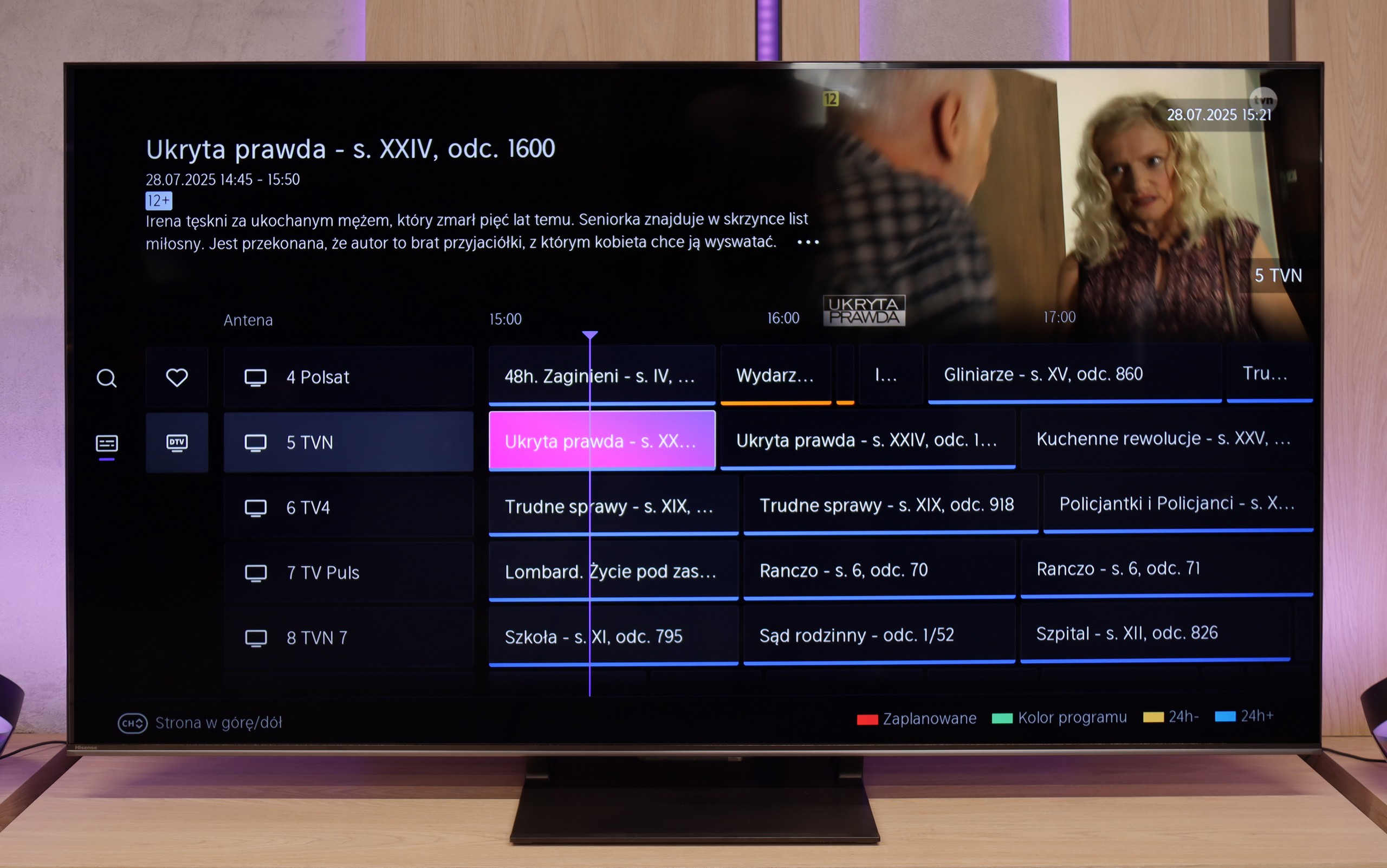
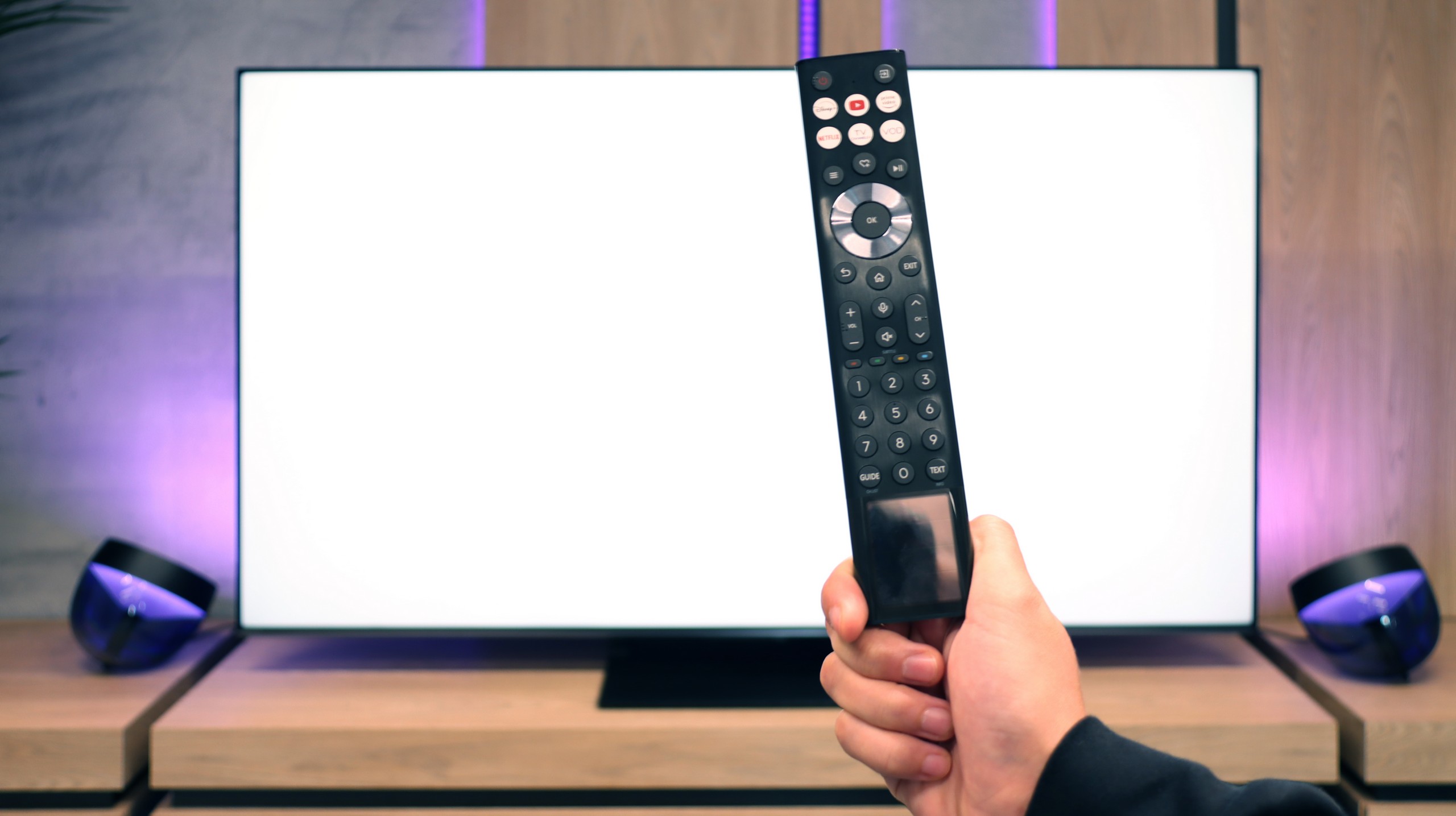

The operating system in the Panasonic Z85A is Amazon Fire TV, which is still a relatively new solution in the Polish market. Until now, we mainly associated it with portable smart devices, and now it is also making its way into televisions – similar to the flagship model Z95A.
On the plus side, it must be noted that the system operates smoothly and responsively. It is also quite intuitive, so navigation does not pose major problems. Unfortunately, when it comes to the availability of applications, it is somewhat lacking. In the Amazon store, we do find icons for popular services such as SkyShowtime, Rakuten, or Viaplay, but… they cannot be downloaded. This is a significant drawback for those who use these platforms daily. Additionally, some functions are poorly translated, which means in certain areas one has to guess what is meant. However, we believe that these are just growing pains, and over time they will be improved – both in terms of translations and application availability.
As for user functions, the situation is much better. The television supports recording to USB and the PiP (picture-in-picture) feature. There is also support for AirPlay, which will surely please users of Apple devices. We also have Bluetooth here, but unfortunately, we cannot connect headphones to it – it only works with keyboards and other control devices. Fortunately, it is possible to connect headphones or a home cinema system via cable, which resolves this issue.
In summary – the Panasonic Z85A offers a solid set of user functions that work well for everyday use. The Amazon Fire TV system is a step in the right direction, especially when compared to Panasonic's old system. However, at this moment, it is difficult to praise it unequivocally. There is potential, but the manufacturer still has a lot of work ahead to ensure everything functions as it should.
Classic Features of U7Q PRO
If you plan to use the television in a more "classic" way, that is, for watching daily programs or connecting headphones, the Hisense U7Q PRO has almost everything you might expect. The television easily supports recording to USB, you can connect headphones via Bluetooth, and the remote control is backlit, which still isn't standard even in more expensive models. Although many people today forgo these classic features in favour of streaming applications, it's good to know that the U7Q PRO still does this properly and without compromises (apart from the lack of PiP functionality).
SmartTV System: Vidaa
When it comes to smart features, this model operates on the VIDAA system in Europe. The system runs smoothly, has a built-in web browser, supports voice control (also in Polish), and AirPlay, which will delight users of Apple devices. However, it's worth noting that VIDAA is a closed system, so you won't find all the popular applications that we have gotten used to with Android TV or Google TV. Before purchasing, it's advisable to check if the apps you actually use are available.
Playing files from USB
3.1/10
8.2/10
Supported photo formats:
Maximum photo resolution:

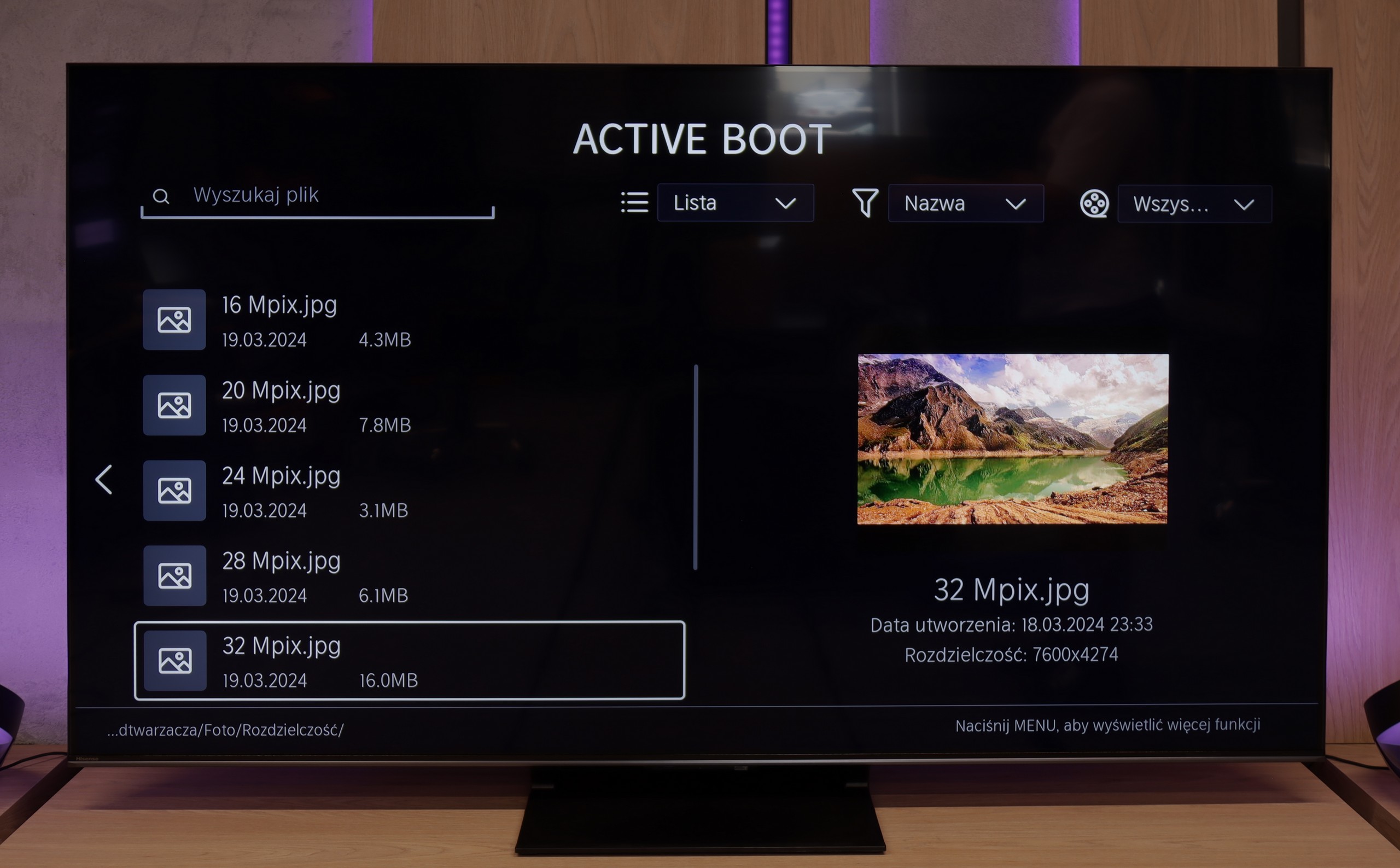
In terms of playback of files from USB, the Panasonic Z85A performs rather mediocrely. The built-in media player does handle most popular video formats, but it has one rather significant drawback – it does not support external subtitles. So, if we have older films on the drive or USB stick with separate subtitle files, we must reckon with the fact that the television simply will not display them. This is a considerable disadvantage, especially for those who use their own media libraries instead of streaming services. Of course, this problem can be circumvented by using an external media player (e.g. via a console or Smart TV box), but this is an additional step that could be avoided if the built-in application were better developed.
The built-in media player in the VIDAA system functioned very efficiently and without issues on our U7Q PRO unit. The television effortlessly read external video and audio files, as well as subtitles, making it convenient to watch films from a USB stick or external drive. Most popular formats worked flawlessly, so there was no need to convert anything. The only drawback was a certain selectivity in handling high-resolution images – not all of them opened. Therefore, you will find a detailed list of supported photo resolutions (Mpix) in our comparison table.
Apps
7.5/10
7.7/10














































Sound
7.4/10
7.8/10
- Subjective sound quality:7.4/107.8/10
- Dolby Digital Plus 7.1:
- Dolby True HD 7.1:
- Dolby Atmos in Dolby Digital Plus (JOC):
- Dolby Atmos in Dolby True HD:
- DTS:X in DTS-HD MA:
- DTS-HD Master Audio:
In terms of sound, the Panasonic Z85A is pleasantly surprising. The television delivers a pleasant and clear sound, and it can also generate a noticeable bass, which adds depth to both films and music. The surround effect is also quite well reproduced, making watching films or playing games more immersive. Unfortunately, there is one "but". The television does not support the DTS:X format, which is quite popular among more advanced home cinema systems. Therefore, if we plan to use this sound standard, it will be necessary to connect the audio equipment first to the amplifier or soundbar, and only then to the television.
Considering the standards of built-in television speakers, the U7Q PRO sounds surprisingly good. The sound is clear, with distinct mid and high tones, and the bass – although limited – doesn’t completely disappear. It can be said that for "television speakers," the level is more than satisfactory. However, it's worth noting that in our test unit we could not play sound in DTS:X format from local files – the television simply does not support it. This means that if you are counting on a cinematic spatial effect solely from its built-in speakers, there might be a certain disappointment. Fortunately, the television smoothly passes the DTS signal to an external amplifier, so if you have a home cinema – just connect it and everything works as it should.


